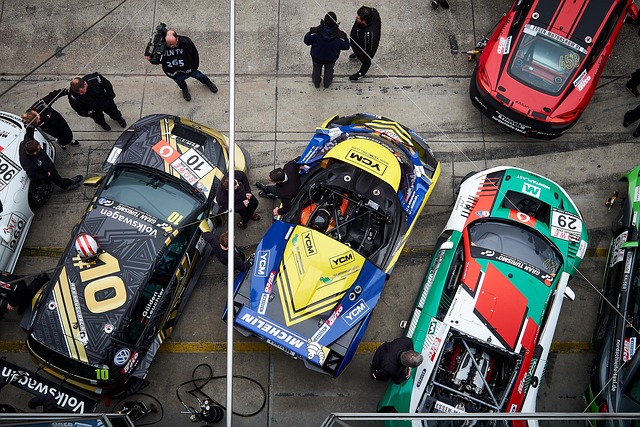In competitive gaming, team balance isn’t just a bonus — it’s the backbone of how matches are won. Every role exists for a reason, and when each piece fits, execution becomes smoother, pressure is better managed, and comebacks are actually possible.
The tank is your frontline. They absorb damage and often lead engagements. Supports handle vision, healing, or crowd control. They rarely top the scoreboard, but without them, the rest crumble fast. Your damage dealers — whether it’s an ADC mowing down from range, a mage bursting through mid, or an assassin diving the back — are your executioners. And then there’s utility, the wildcard roles that flex between zones. These picks patch team gaps, depending on what’s needed.
Now, compare solo queue with coordinated team drafts and you’ll see the problem. Solo queue’s built on chaos. You draft what you like, hope it fits, and pray someone picks support. But in team play, everything is intentional — counters, synergies, timers. Roles aren’t just filled, they’re optimized.
Bottom line: good lineups cover each other. Great ones take control. Team balance isn’t just meta — it’s mission critical.
Support
Support isn’t just about healing or following your carry around. It’s about map presence, timing, and setting the tempo without stealing the spotlight. A good support keeps vision up, peels when needed, and knows when to disengage a bad fight. These players don’t always end up on highlight reels, but they make the plays that win games.
Great supports turn okay carries into real threats. They control key zones, track cooldowns, and often call the shots around skirmishes. If you’re glancing over the support role in drafts, you’re missing the bigger picture.
Flexibility matters too. The ability to swap between enchanters, tanks, or utility picks can tip the balance, especially in comps that need disengage or extra lockdown. When momentum shifts, it’s often a well-timed support pick that turns things around.
Draft Smarter: Play to Your Team’s Win Condition
Understanding your win condition is essential before the draft even begins. Knowing how your comp is meant to function sets the tone for every pick you make.
Define Your Win Condition
Before locking in champions, ask yourself: what does our team want to do?
- Teamfight: Are you building a comp that thrives in 5v5 scenarios?
- Pick-Off: Is your lineup focused on catching isolated enemies?
- Late-Game Scaling: Are you banking on surviving early to outscale in the late game?
- Split Push: Do you have strong side-lane pressure with teleports and map control?
Identifying this early helps set expectations and informs itemization, laning, and team coordination.
Draft for Synergy, Not Just Comfort
While picking champions you’re familiar with has value, synergy between picks is the foundation of a successful draft. A mix of damage types, reliable engage, and utility can turn average champions into a cohesive threat.
- Choose champions that play well off each other’s strengths
- Prioritize engage, disengage, and crowd control tools
- Aim for a balance between early pressure and scaling potential
Avoid Common Drafting Mistakes
Even experienced teams fall into traps that leave their comps unbalanced and easy to counter. Here are a few to watch out for:
- Too Much Damage, No Frontline: A full damage comp might win early, but crumbles later without someone to soak damage.
- No Lockdown: Mobile enemies will kite or escape if you have no crowd control to pin them down.
- Missing Win Condition: If your comp wants to scale but lacks wave clear or lane priority, you may never reach late game intact.
Drafting with intention puts your team in the best position to execute your strategy—and that starts with seeing the bigger picture during champ select.
The “meta”—short for metagame—is the unspoken rulebook that shapes how a game is played at any given time. It’s not written by developers directly, but by how players respond to patches, balance changes, and shifting strategies. When creators or pros discover a high-impact combo or optimal strategy, it spreads fast. Suddenly, everyone’s playing the same way. Until the developers step in.
That’s where patches come in. One tweak to a hero’s stats or a system mechanic can flip the table. A buffed support character becomes the new must-pick. A nerfed weapon drops from meta overnight. Add in top-tier pro play (especially in esports titles), and the trends shift even faster. Pros influence what casual players mimic, and smart vloggers know how to break down those changes in a way regular viewers can understand.
To stay ahead, creators rely on fast, accurate info. Patch notes are the foundation, but tools like Tierlist.gg, Reddit meta threads, and pro streams give deeper insights. Even Discord groups built around game analysis can be goldmines. If you’re vlogging around games, spotting the meta before it peaks—and explaining it well—is a straight path to influence.
Strategic Counter-Picking: Smart Moves, Not Knee-Jerk Reactions
Don’t Just React: Play With Purpose
Counter-picking is more than just selecting a hero to frustrate your opponent. It’s about understanding the entire flow of the match, your team’s synergy, and the enemy’s win conditions. Reacting emotionally or too quickly to an enemy pick often leads to an imbalanced draft. Instead, aim for decisions that fit your team’s strategy while neutralizing key opponent threats.
- Avoid snap picks based on frustration
- Prioritize long-term matchup advantages
- Align counters with your team’s overall plan
Learn to Spot Threat Patterns
Reading the enemy draft early can give you a major advantage. Successful players don’t wait until the last second to decode a strategy—they spot the seeds of synergy early and plan accordingly.
- Look for high-value initiators or burst comps
- Recognize healing-based lineups and sustain cores
- Identify weak scaling picks that can be punished later
Go Off-Meta With Purpose
Meta picks are powerful for a reason, but sometimes the smartest move is to zig when others zag. A well-chosen off-meta hero or strategy can throw off your opponents and secure an edge—if it’s done intentionally and not out of desperation.
- Use lesser-picked heroes with strong situational value
- Counter predictable team comps with outlier strategies
- Make sure off-meta picks still fit your role and team goals
Pro Insight: Great counter-picking always comes from knowledge and foresight, not frustration. Watch pro drafts, study matchup guides, and run scrims to practice disciplined pick strategies.
Sometimes, your team ends up with a comp that just doesn’t make sense. Maybe no one picked a tank, or your only damage source is a squishy mage. Doesn’t mean the game’s over. That’s where smart communication and role-swapping come in. If someone calls for a switch and the rest actually listens, you can patch the holes. Suddenly, your jungle swaps top, the off-meta support grabs a peel-heavy champ, and you’ve got something playable.
Drafting in ranked is chaos compared to competitive play. In solo queue, you’re working with strangers and timers, so locking in comfort picks is common. But if you’re looking to climb or play in scrims, you have to start thinking about synergies, wave clear, and power spikes. Comp building matters more than ever, even outside tournament formats.
And then there’s the big question: what does the team actually need? Sometimes, you need heavy crowd control to stop the dive. Other times, you need one tank to front line and let carries breathe. And then there are games where all you need is raw burst to delete one target and reset fights. Being the player who can flex between CC, tankiness, and damage — that’s worth more than a fancy win rate. It’s how bad comps turn into win conditions.
Great teams aren’t born, they’re built with intention. When it comes to creating solid comps—whether for content collaboration, gaming, or even co-hosting a vlog—the smartest move is to start with clear roles. Play to your strengths. Cover for each other’s weak spots. If one of you is great on camera but freezes when it’s time to edit, pair up with someone who thrives behind the scenes. It’s not about having the same skills—it’s about balance.
Also, don’t get hung up on idea of a ‘perfect comp.’ The best setups evolve. What works today might lag tomorrow if one of you levels up or changes trajectory. Stay light on your feet. Reassess, tweak, rotate as needed. Flexibility keeps the synergy strong.
For more tips on getting better, faster, smarter, check out: Efficient XP Farming Techniques in RPGs.





